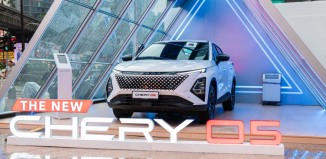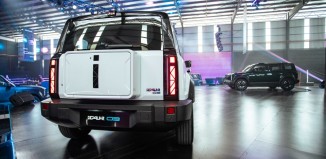2015 Toyota Camry 2.0 Test Drive Review
First introduced to Malaysians in 1994, the Camry is one of Toyota’s biggest success stories in our market with over 115,000 units from five model generations sold. In its existence, the Camry has grown accustomed to segment leadership, having carefully cultivated itself to be the default choice of middle management executives.
Recent developments have conspired to erode the Camry’s dominance, however, with the Honda Accord and Mazda6 SkyActiv, in particular, successfully tempting many punters in the segment to make the less-than-ubiquitous choice. Whilst it may seem churlish to think of a model that shifted 20,000 units into Malaysian homes in the space of three years as a failure, the common consensus among motoring circles is that the current Camry, launched in 2012, was overpriced and not nearly a good enough effort from Toyota.
An updated version of the Camry was launched recently, and from the changes that were being detailed, it is evident that Toyota ‘got the message’ from consumers and set about to thoroughly fix the Camry in a bid to regain segment leadership.
Prices & Variants
The Camry continues to be offered in the same three-pronged line-up as before with a pair of 2.0-litre variants forming the base line of the range. Prices are unchanged with the entry-level 2.0E asking for RM149,900 inclusive of on-road costs and the mid-range 2.0G variant as tested in this review sitting RM10k north under the same terms.
Equipment is generous if looked at from the perspective of amenities and creature comforts; the E variant starts off strongly with HID projector headlamps, power retractable side mirrors, keyless entry, dual zone air-con with rear blowers, Optitron instruments, and all-round parking sensors. Moving up to the G model, in comes leather upholstery, electric seat adjustment, and cruise control.
Safety, however, is less impressive. Whilst ABS, EBD, and ISOFIX anchors are standard, electronic stability control is not, being notably absent in the 2.0E. Airbag count stops at two for both E and G models, low by segment standards; for a car priced at least RM12k above equivalent variants of its closest rivals, namely the Honda Accord and Nissan Teana, we expect a lot better.
The story is significantly different with the RM175k Camry Hybrid but we’re saving that for a future review.
Specifications
Toyota is often lampooned by critics for shortchanging buyers in our part of the world with outdated technology. This new Camry makes those same critics positively eat their words. The familiar AZ-series powertrain that was carried over from the previous generation model has been phased out along with its trusty 4-speed slushbox partner; in its place comes the newer and significantly more advanced 6AR-FSE engine accompanied by a new 6-speed automatic transmission.
Produced at the GAC Toyota joint venture plant in Guangzhou, the all-aluminium 6AR engine is one of the newest and most advanced engines in Toyota’s portfolio. Full series production of the engine began in late 2014, so outdated it certainly isn’t and the Camry is, in fact, the first Toyota model globally to use this new engine.
Technological content of the engine is impressively high; high enough for us to consider it to be the most sophisticated powerplant in the segment. Its fuel system and valvetrain, in particular, are both light years more advanced than anything else rivals have to offer. Feeding petrol into the four combustion chambers is Toyota’s D-4S injection system, which combines the usage of port and direct fuel injection depending on situation – the former on low throttle load, the latter when pedal goes to metal, and a combination of both for everything in between.
The biggest technical trump card of the engine, however, is its ability to vary itself between Atkinson and Otto combustion cycles – the former operating condition for the benefit of fuel economy, the latter for high performance. Without getting into too much dry technicalities, the main difference between the two combustion cycles is that the intake valves stay open longer well into the compression stroke in an Atkinson cycle engine. As such, the key for Toyota to enable a smooth transition between the two combustion cycles is its new VVT-iW valvetrain, which varies timing of the intake valve according to the combustion cycle in operation. To say that this is nifty would be an understatement.
Outputs of the engine are quoted at 165hp and 199Nm, a considerable upgrade from the predecessor’s 146hp and 190Nm. Relative to direct injected powertrains of the same capacity, Toyota’s outputs err on the conservative side, but against rivals still running on port injection, it leads by clear daylight. As a side note, we learned, whilst compiling the table below, that the Hyundai i40 has been discontinued in Malaysia.
 Moving away from the engine room, Toyota claims that work has also been done on the chassis to improve the Camry’s dynamics. Steering and suspension settings have been reworked, but with hardware and architecture generally remaining the same, actual changes are not adequately significant to delay us any further here.
Moving away from the engine room, Toyota claims that work has also been done on the chassis to improve the Camry’s dynamics. Steering and suspension settings have been reworked, but with hardware and architecture generally remaining the same, actual changes are not adequately significant to delay us any further here.
Driving Experience
If we can say that the Camry’s engine sets new standards in overall sophistication on paper, it continues that winning streak on the road by raising the bar in mechanical refinement and smoothness. Having two injection systems and two combustion cycles at its disposal, the engine’s talents are suitably wide, able to alternate seamlessly between being quietly smooth at idle and being joyfully free-revving when pushed.
The new 6-speed gearbox complements the engine well enough for the purpose with seamless shifts at cruising, but at the harder extremes, it is clear the that the transmission has a narrower operating comfort zone than the engine it is paired with. Its calibration is unsurprisingly biased to be conducive for smooth operation at a leisurely pace and is consequently not as snappy as we would have liked when pushed hard. Even with its manual shifting function in use, the transmission is often reluctant to downshift for that added overtaking punch. Not that customers will mind, we suppose, and it is not difficult to agree that the setup is anything other than being entirely appropriate for its purpose.
Just as the transmission discourages any notion of overtly sporty driving, the suspension calibration follows a similar approach. Ride is slightly firmer than what we would have expected of a Camry, but it is still a highly pliant chassis; on less than perfect surfaces, it does what successive generations of the Camry have done best – absorbing imperfections with minimum fuss. Toyota claims to have sharpened the Camry’s chassis for a more dynamic drive, but the suspension still allows significant amounts of bodily movements around corners. In short, we won’t be pitting this against the Ford Mondeo in a dynamic test anytime soon.
Another area where the new car maintains its quintessential Camry-ness is cabin noise, or should we say, the pleasing lack of it. Honda may boast of Active Noise Cancellation in the Accord, but there is no question that the Camry is simply the quieter car on the move. As an effortless long distance cruiser, few cars are suited to the task as well. Our one major gripe of the car relates to its brakes – they stop the car well enough, but lack progressiveness in response – stops can be quite abrupt if you lack finesse in your pedal modulation.
Verdict
The conclusion of this review is less than straight forward. On one hand, Toyota has utterly trumped the Camry’s rivals with a class-leading powertrain but failed to push the safety agenda hard enough for our liking.
Whilst we can appreciate that the new Camry 2.0 gives you a new engine without charging more than before, offering only two airbags and not having electronic stability control as standard is difficult to accept when your asking price starts RM12k north of your nearest rivals.
UMW Toyota evidently recognizes the less than convincing value preposition it has put itself in with the Camry 2.0, and this is reflected in the distribution of its sales targets – out of 9,000 Camrys it targets to sell this year, 7,000 are expected to be the more expensive Hybrid model.
We rate the new Camry 2.0 highly, but until it comes standard with six airbags and electronic stability control, its substantial premium over equivalent variants of the Teana and Accord is difficult to justify.


























































